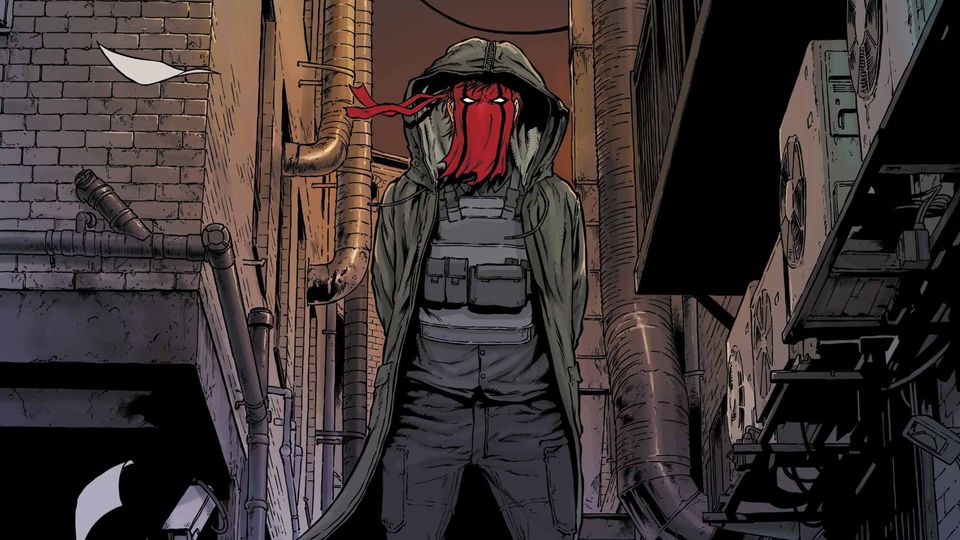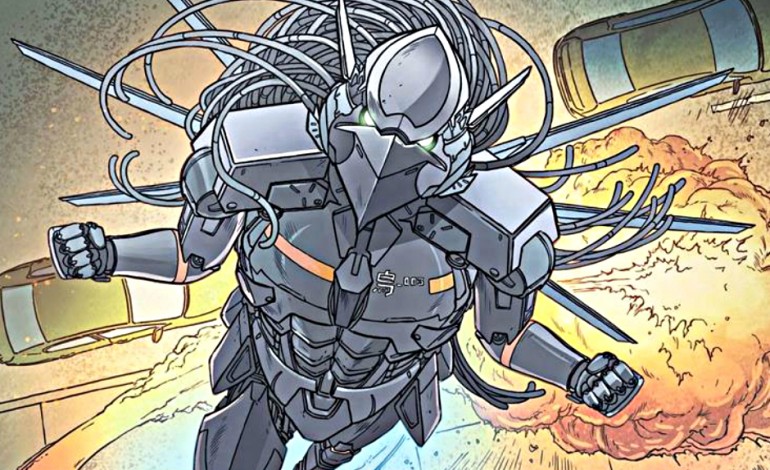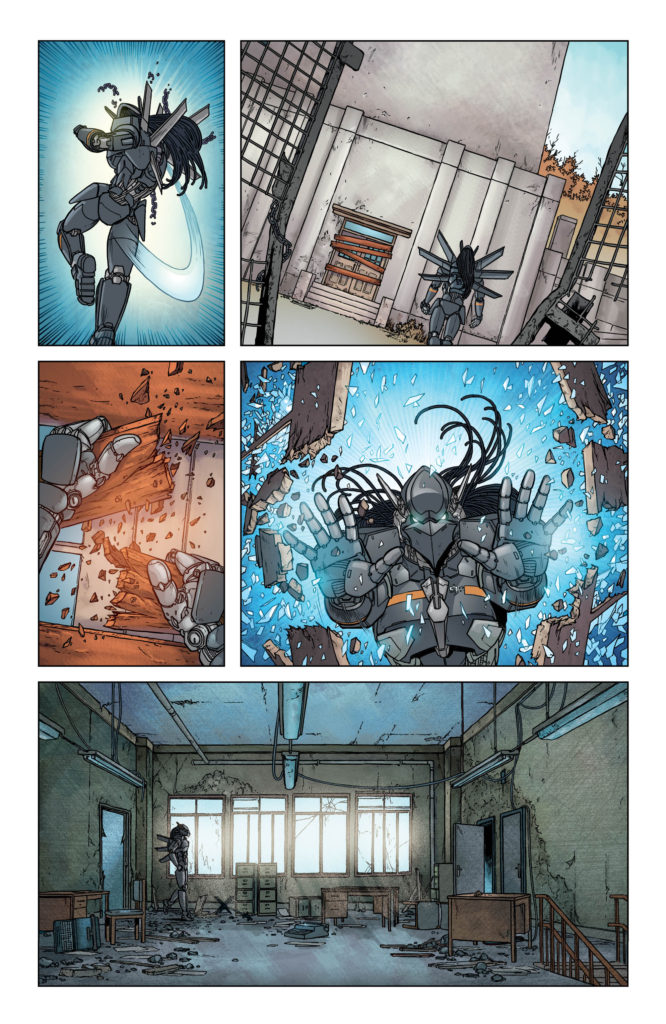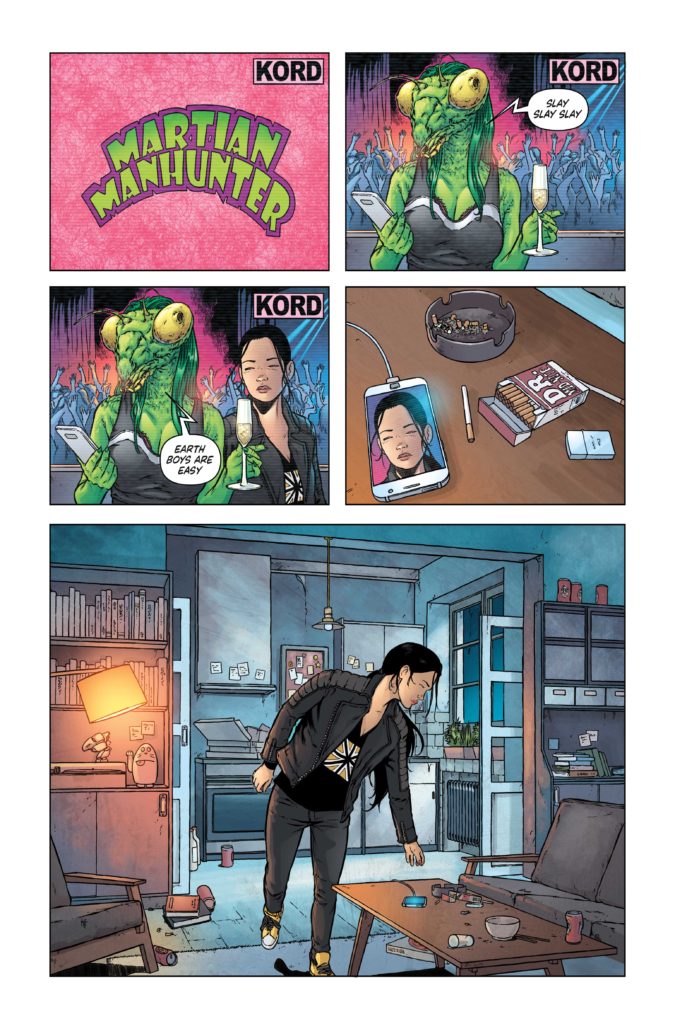
@nayrdrof
Few opportunities arise in life that allow one a do-over. Not a do-over so much as a “Take 2”, more to the point. Like Clapton with Layla. One version had the bad-assery of Duane Almond while another was amazing baby-making stripper music. Both have their merits, yet determining which is better remains a test of taste and time. So shall be the fate of the re-imagined Wildstorm Universe by Warren Ellis and John Davis-Hunt.

Over the course of this reincarnated publication, your righteous “Reverend” Ryan Ford here shall attempt to deconstruct the work of writer and artist as they undergo the daunting task of world-building. Putting a new spin on a proven product can reap rewards and acclaim, much in the way Christopher Nolan brought us The Dark Knight. Or, it could be the TV version of Lethal Weapon. There is a fine line between genius and insanity, measured only by success. First and foremost, however, a familiar foundation of friends and foes must guides us, the readers, through this fresh foray. Fortunately, there is no shortage of substance within this universe. Shady, world-dominating corporations, technocratic billionaires, cyborgs, and God-knows-what-else encompass known and unknown together. But therein lies the beauty; we don’t know what comes next, but we want to. And at the end of the first issue of The Wild Storm, the more we learn, the less we know — which is a good thing.
The ambiguity of characters and their motivations highlight not only to the source material, but also Warren Ellis (Moon Knight) and the script he has crafted. Each character voice is distinct, despite coming from pre-established sources. Their words, however, deceive and conspire. There is pacing; there is pathos; there are problems.. There is a universe to create and a planet to save, which could be an excuse for the slowness of the story so far. There are heroes and villains yet to be revealed, which should inject more life into the overall arc. There is also the Most Interesting Man In The World: Jacob Marlowe. *Side note – my first experience with this Universe was the 90’s cartoon Wild C.A.T.S: Covert Action Teams, in which Mr. Marlowe did not appear to be selling Dos Equis, but I digress.* To come to a point, not all of the famous faces appear in Issue #1, yet the groundwork for their return has been laid.
Content notwithstanding, one criticism dwells within the exposition. With allusions to Skywatch, International Operations and the rest of the shadow governments, a lot of information needs to come forth without giving too much away. For those familiar — even in the slightest, with any of these characters — the backstory is of secondary importance. For those new to the title, the characters and their motivations can seem unclear and confusing. Dialogue isn’t the problem so much as how it is said. The method of delivery, while cinematic in quality, leaves a bit more to be desired and can be, for lack of a better word, boring. One portrait panel after another of talking heads becomes tedious after awhile as the graphic element becomes overshadowed by the dialogue. Though it is understandable, improvements can be made. It’s almost as if Mr. Ellis has written himself into a corner with the layout, hoping to find a secret passage behind the walls. As such, the dynamism of John Davis-Hunt’s artwork doesn’t have enough room to spread its wings.
As I mentioned earlier, my first introduction to characters like Jacob Marlowe, Grifter, Zealot and others came with blistering guitar riffs and unnecessary neon spandex. Now that Mr. Davis-Hunt has taken the reigns, a new sense of realism has emerged. There is a general feeling that comes from his character designs and environmental portrayals that seem possible. By some twist of fate, this world and these people could exist. And that goes along way considering one of the first people we meet has a subdermal exoskeleton (figure that one out). Likewise, this world appears to be much more diverse than that of years past. The reflection of modern society is apparent, though distorted slightly by a highly advanced technocentric lens. And space people. There are also space people. Which, when they finally show, I’m sure they’ll remind us all too much of what we have here on Earth. Guess we’ll have to wait until the next episode. 3/5 Bibles.
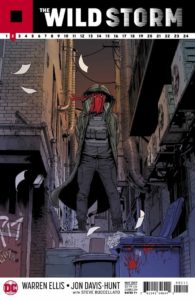
Well, faithful readers, issue #2 came and the space-man cometh. Sort of. As was alluded to in the previous review, there is much ado about the Skywatch crew. However, their presence and motivation still remains much of a mystery as there has been what amounts to not much more than a cameo appearance. Nevertheless, the seeds of distrust are beginning to bloom. We now have a face to pin on the ruler of the sky as well as headshots of middle-management. Similar to many real life corporations, it seems as if the Senior Executive Junior Associate Vice President of Skywatch Ground Operations Sub-division-whatever, Ms. Trelane, is the only one doing actual work. She and her girl Lucy walk the line between the shady dealings of International Operations and whatever Jacob Marlowe (the Russian guy from Snatch?) is up to.
And what, you ask, is the most interesting man in the world doing these days? Getting the band back together for a Catalina Wine Mixer! By band I mean a covert action team. And by Catalina Wine Mixer I mean a fucking Catalina Wine Mixer! Or, rather, trying to recruit Angie Cyborg to the team before anyone else gets to her.
That, in a nutshell, comprises the Cliff’s Notes for issue #2. What doesn’t show up in the syllabus, however, is the dramatic uptick in quality. The first few pages of the episode contain little to no dialogue, making the cinematic quality of the artwork and story it tells jump straight from the page. While we’re on the subject of artwork, let us touch once more upon character designs. Perhaps your “Righteous Reverend” here is getting a bit old. Granted, I did just become a father, which does take a few years off, but that should not excuse the loop for which I was thrown. Specifically, on Cole Cash aka Grifter. Being accustomed to the blond haired Alexander Skarsgard type of the 90’s, it took a moment to understand who the Shermanator packing heat was. Yet it did bring to mind that everything about this world feels more grounded. The environments and those living within convey a symbiosis; that everything fits.
While the visuals are coming into their own as the story progresses, it is the literary aspect that is really picking up speed. The pacing, as compared to the debut issue, finally has an engine behind it. With every sector of the plot — whether it be stories A, B, or C — there is a sense of motion that propels the plot and encourages the reader to plummet off the edge of every cliffhanger. Yet, this could not happen lest there be emotional stakes ready to break at any moment. There is heart, there is feeling, and, thankfully, there is another issue coming soon. 3.25/5 Bibles.
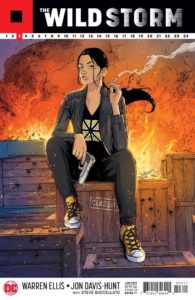
As we delve into the third installment of The Wild Storm, we must acknowledge the significance of the number three. Aristotle is attributed with first addressing a three-act dramatic structure in his work Poetics. He was really saying that stories, for one, are comprised of a beginning, middle, and end — which is, like, “duh” until Horace upped the ante with the whole five act play; but anyway… Three is important when speculating on story arcs. If one is to assume that we, the reader, shall be receiving one new issue per month for one year, that means we are a quarter of the way through, numerically. Unless we get 24-issues, in which case the sum of the parts would then be doubled for a 6-12-6 format. Which means math is the lesbian sister of biology. What it means from a story perspective, assuming we’re on a one year lease, is that Act I is over. It sheds new light on what came before as well as forecasts an air of what is to come. Since all the fun usually happens in Act II, the next six issues should be dynamite.
Since we’re already on the writing–kinda–let’s do a reverse analysis of where we’re at. Like Memento, only no Guy Pearce. The major players are mostly introduced. The ones responsible for driving the story are those for whom the target audience should already be familiar with. Obviously, not all of the important roles have had their time in the spotlight, which indicates escalating circumstances, which should equal more fun. We have our first taste of real action. As I mentioned earlier, this puts a new spin on the slow burn and gradual build in pacing up to this point. On the action itself, much of it is derived from necessity, meaning that each of the combatants has a clear yet opposing objective. It also presents an opportunity to showcase powers and abilities, even if those are simply hyper-advanced explosive armaments.
That is also a decent transition into the artwork of the issue. The action for which the script calls is executed perfectly. There has been much attention paid to establishing a believable environment so that as the situation devolves, it looks believable. In short, there is consistency. The color choices for various displays — explosions vs. energy blasts for example — resonate in their simplistic variance. It seems natural, as if to say “oh yeah, that’s exactly what a teleportation field would look like”. As for the sense of motion, it is so much better than the pilot issue. All those talking heads and no David Byrne.
Now, keeping in line with this whole trifecta theme going on, let’s talk about how the motion invokes a psychological response, setting up the perfect act break. As the plot moves on from page to page, the desire to flip each one faster occurs; working in unison with superb script work, so much information is absorbed with each panel, yet easily. One quick glance and you’ve got the gist of whats going down. Only on a second viewing do you notice Easter eggs for a much larger world. The Citizen Steel one was a favorite of mine. It is also worth noting that the dialogue does not get in the way of the art and vice versa. Like I said before, you get a lot of info out in a very short amount of time. And in another month’s time, we shall learn even more. 4/5 Bibles. – Ryan Ford

